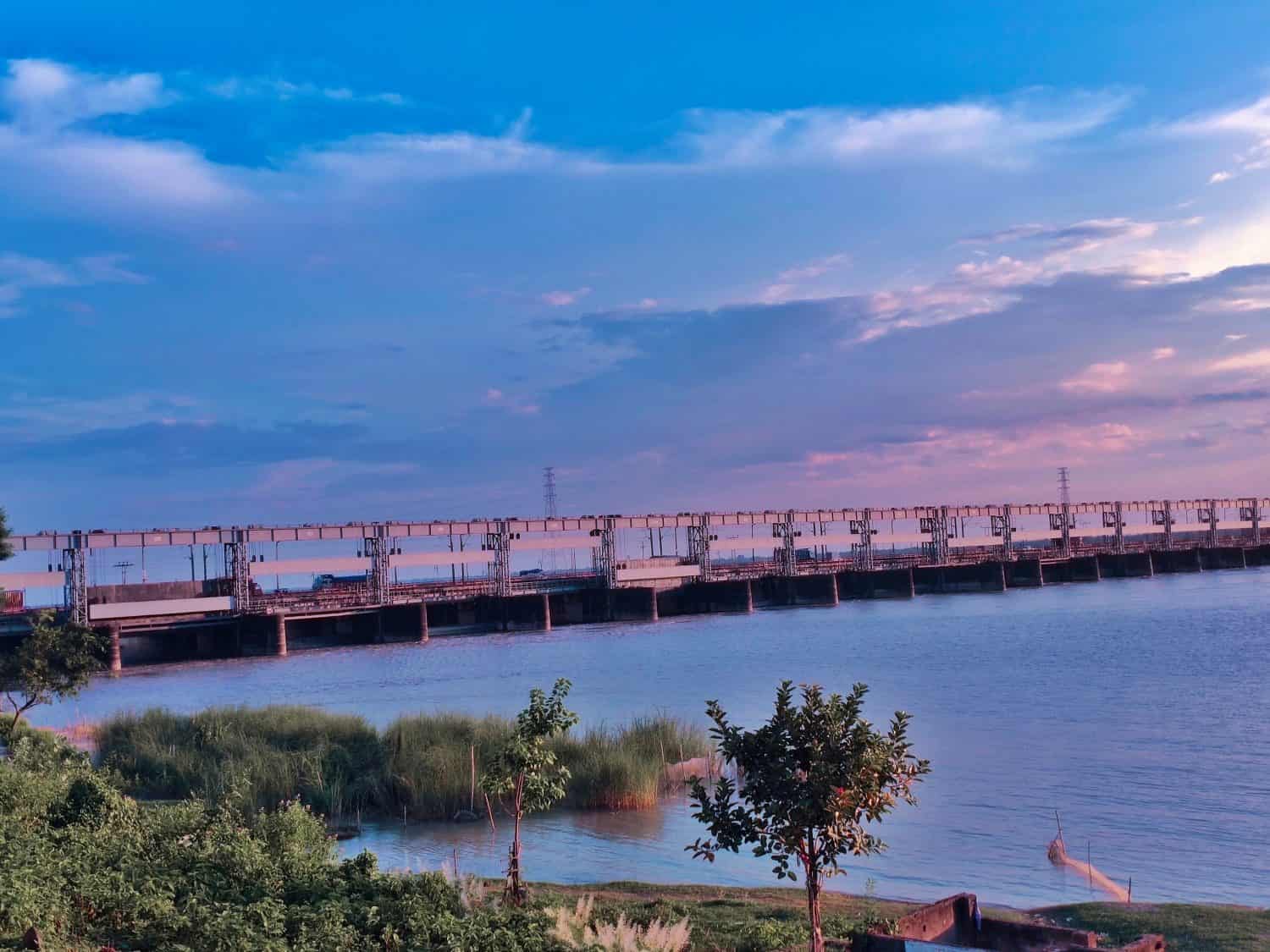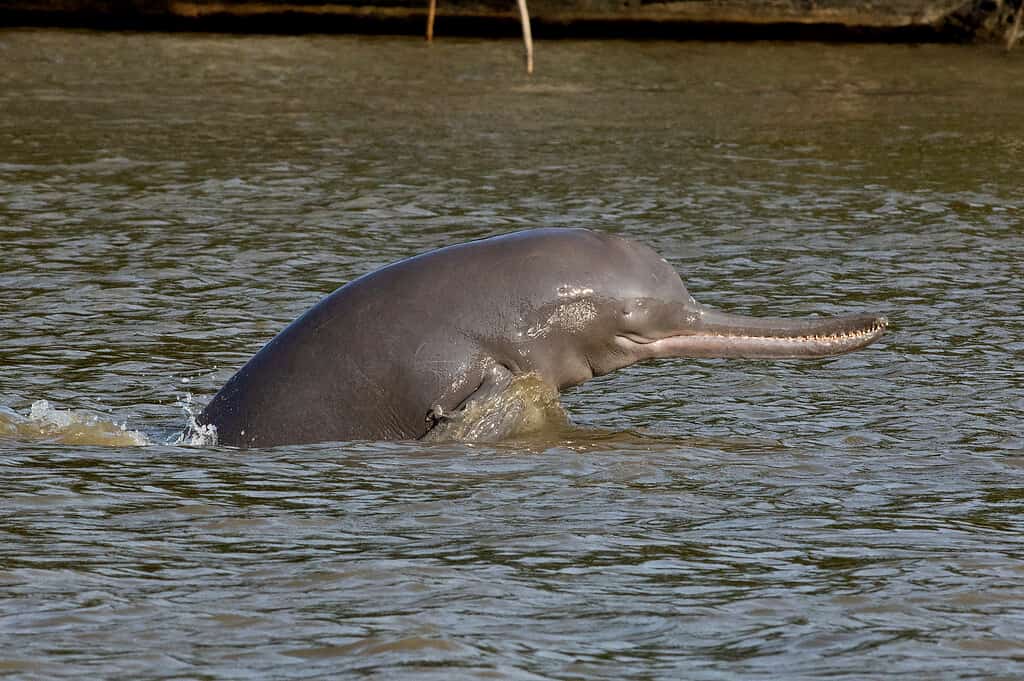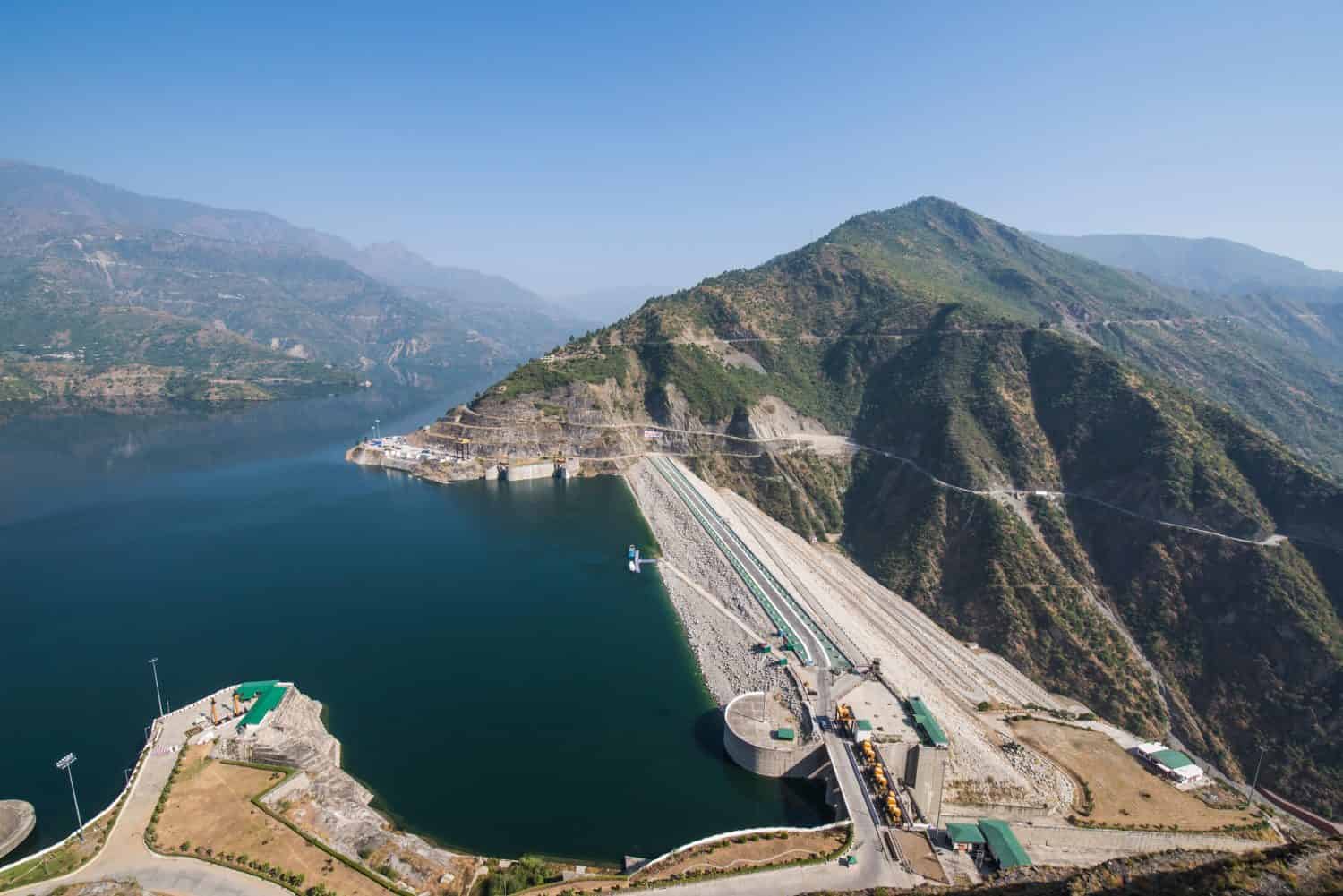The Ganges River runs from India, beginning in the Himalayan Mountains, and flows through Bangladesh, eventually emptying into the Bay of Bengal. It is a sacred body of water to Hindus, who refer to the river as “Ganga Mata” or “Mother Ganges.” Bangladesh, on the other hand, calls the Ganges River “Padma River.” Padma is the name of the sacred lotus flower, which signifies beauty and purity. Clearly, the Ganges is a significant river to the region with an incredible history, features, and beliefs surrounding it. Here are 10 mind-blowing facts about the Ganges River.
#1 The Ganges Has the Most Populated River Basin in the World

Almost half of India’s population and nearly 70 percent of Bangladesh’s population reside within the Ganges river basin.
©molly Photography/Shutterstock.com
The Ganges River Basin is 1,086,000 square kilometers (419,300 square miles) in size and is the world’s most populated river basin. Within the Ganges River Basin lies the largest river system on the subcontinent. The southwest monsoon winds, which bring rain and tropical cyclones from June to October, mainly supply the river basin with water, giving the area a dependable water supply. Because of this and its size and fertile soil within the area, the Ganges River Gasin can support a huge population. As a result, almost 600 million people in India populate the river basin, and about 90 percent of the Ganges River Basin is used for irrigation.
Nearly 50 percent of India’s and 70 percent of Bangladesh’s population live in the Ganges River Basin.
#2 The Ganges Is Considered a Sacred River

The Ganges River is considered one of the most holy rivers in Hindu culture.
©Marcos del Mazo/Shutterstock.com
In Hindu tradition, the Ganges River personifies the Goddess Ganga. The Ganga is the goddess of forgiveness and purification of one’s being. Depicted as a graceful woman, Ganga rides atop a Makara, which looks like a divine crocodile, that she uses to navigate the Ganges’ water.
Every fragment of the Ganges which flows through India is considered sacred. Hindus bathe in the waters to receive forgiveness for past sins and to help them gain salvation. It is extremely important to bathe within the waters of the Ganges at least once during a Hindu’s lifetime.
Hindus also pay homage to their ancestors or gods by cupping the river’s water, holding it up, and then letting it fall back into the river.
When returning home, Hindus bring back pots of the holy water with them to be used in rituals. Giving a relative a drink of the Ganges’ water in their last moments is believed to help take the soul to heaven.
#3 The Ganges River Is Believed to Have Purifying Waters

Many believe in the purifying and healing powers of the Ganges River despite its pollution levels.
©K321/Shutterstock.com
Despite the Ganges being heavily polluted, Hindus still regard the river as pure and possessing purifying capabilities. To be ritually cleansed, one must bathe in the moving waters of the Ganges and let it absorb the bather’s impurities, carrying them away down river. In some areas where the current is particularly fast, a bather must hang on to an anchored chain during purification.
#4 It Is the Longest River in India

The Ganges River is 1,569 miles long. That’s about two-thirds the length of the Mississippi River.
©KernelNguyen/Shutterstock.com
While the Indus and Brahmaputra rivers are longer in total length, the Ganges River has the longest river length that is entirely within India. The Ganges is 2,525 kilometers (1,569 miles) long and is the second-largest river on the Indian subcontinent by discharge.
When comparing total length, the Ganges is the second longest river in Bangladesh. The longest river is the Brahmaputra, 2900 kilometers (1,802 miles) long. Also, the Ganges River Delta, where the Ganges empties into the Bay of Bengal in Bangladesh, is the largest river delta on earth.
#5 The Ganges River Basin Is Instrumental to Agriculture in India and Bangladesh
![Bangladesh, country of south-central Asia, located in the delta of the Padma (Ganges [Ganga]) and Jamuna (Brahmaputra) rivers in the northeastern part of the Indian subc](https://a-z-animals.com/media/2023/12/shutterstock-2272787139-huge-licensed-scaled.jpg)
Sugarcane, potatoes, and wheat are some of the most cultivated crops in India and Bangladesh. However, rice is the most widely grown crop in both countries.
©NB Hafiz Robin/Shutterstock.com
The Ganges river basin provides continual irrigation of the area, mostly in the form of seasonal flooding. Also, gravity canals, which are manufactured irrigation systems, have been used by people since ancient times. The Ganges itself carries nutrient-rich sediment along its course, making the soil along the river quite fertile. That renders it prime land for rice, sugarcane, lentils, potatoes, and wheat. Also, the swamps and lakes along the Ganges basin make fantastic locations for growing sesame, mustard, legumes, and jute.
Because of this, the Ganges River is essential to both countries’ livelihoods and food security.
#6 The Ganges River Is Very Polluted

The Ganges is considered the fifth most polluted river in the world.
©Shanti Hesse/Shutterstock.com
Because nearly 400 million people reside by the river, the Ganges is extremely polluted. Sewage runoff from cities along the river has caused high levels of fecal coliform bacteria. In some areas, like Varanasi, the levels are one hundred times greater than the Indian government’s limit.
And since the Ganges is considered a holy body of water, many worshipers submerge religious offerings wrapped in plastics in the river. Then, there is the problem of industrial waste being dumped into the Ganges.
When you consider the multiple sources of pollutants in the river, it is worrisome that many of the poor still utilize the Ganges for bathing, washing, and cooking. In fact, it has been suggested that water-borne illnesses cause up to 80 percent of illnesses and one-third of deaths in India.
#7 Climate Change Is Affecting the Ganges

If the glaciers thaw too quickly, the meltwater rush could cause damaging mudflows and flooding.
©bodrumsurf/Shutterstock.com
The Ganges River is fed by glacial meltwater from the Himalayan Mountains and monsoon rains. Previously, with glacier melting and outburst flooding from glacier lakes, the area would see a flood perhaps once in a generation. However, rain patterns are changing, and flooding is becoming more frequent. If the glaciers recede quickly, it can also cause increased flooding or damaging mudflows. And, once the glaciers are gone, so is the main water supply to the Ganges. With the changing climate, the region may face more droughts or seasons of higher temperatures as well.
#8 The Farakka Barrage on the Ganges Caused a Water Dispute

The Farakka barrage was completed in 1970 for $208 million. Operations began in 1975.
©Md Alfaj Alam/Shutterstock.com
In 1975, a barrage was built in Farakka near where the Ganges entered Bangladesh. The tributary Hooghly branches off the main river and flows past Kolkata in West Bengal. The Farakka Barrage diverts 64,000 cubic feet per second of water from the Ganges to the Hooghly River. Naturally, Bangladesh had issues with this diversion dam.
In 1996, the Indo-Bangladesh Ganges Water Treaty was signed to resolve water-sharing conflicts. In it, terms were laid out that if the Ganges decreases in flow to a certain level, the countries split the water fifty-fifty. Unfortunately, in 1997, the Ganges River fell to lower-than-average levels, making the shared water agreement difficult to implement. The levels returned to normal in the next few years, but the countries are searching for a way to rectify the problem. Perhaps Bangladesh may construct its own barrage at Pangsha.
#9 Home to the Endangered Ganges River Dolphin

Because of issues like water pollution, dams, barrages, and commercial fishing, the Ganges river dolphin has made the endangered species list.
©Ranjan Barthakur/Shutterstock.com
Discovered in 1801, the Ganges river dolphin (Platanista gangetica) is a freshwater mammal that can be found in the Ganges, Brahmaputra, Karnaphuli, and Meghna rivers of India, Bangladesh, Nepal, and Bhutan. This river dolphin is essentially blind and uses ultrasonic sounds to locate prey. Often, the Ganges river dolphin will swim on its side to trail its flipper along the bottom of the river. This helps the dolphin locate prey such as fish, shrimp, or mollusks to eat.
However, the Ganges river dolphin is classified as endangered. Bycatch is a big problem. Commercial fishermen catch the dolphins by mistake, and many dolphins are dying because of it. Also, the Ganges river dolphin is popular for its meat and oil. Both are used medicinally and in net fishing.
Pollution, habitat depletion, dams, and barrages are other reasons the river dolphin populations are decreasing. There used to be tens of thousands of them, but now only 1,200-1,800 are left in the river.
#10 The Hydroelectric Power of the Ganges

The Tehri Dam generates 1,000 megawatts of power and impounds the Bhagirathi River, one of two headstreams of the Ganges River.
©valdiya_ravi/Shutterstock.com
Some estimate that the hydroelectric potential of the Ganges could be anywhere from 51,500 to 128,500 megawatts. About three-fifths of that power potential is in Nepal, whereas the rest is in India. India has developed some of that potential in Uttarakhand and Himachal Pradesh, as well as the upper Yamuna, Chambal, and Rihand rivers. However, Nepal has barely developed its hydroelectric potential compared to India. There is still a lot of untapped power along the Ganges River.
The photo featured at the top of this post is © Jono Photography/Shutterstock.com
Thank you for reading! Have some feedback for us? Contact the AZ Animals editorial team.






